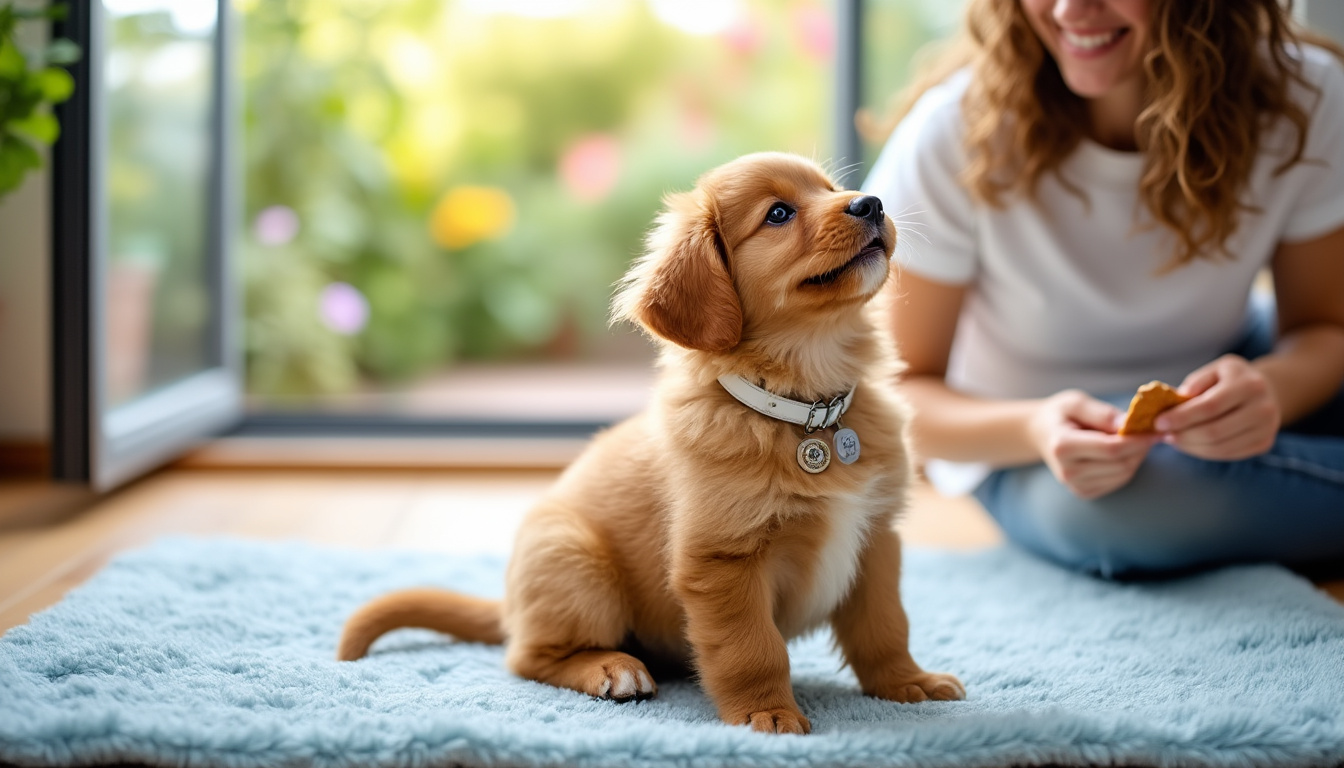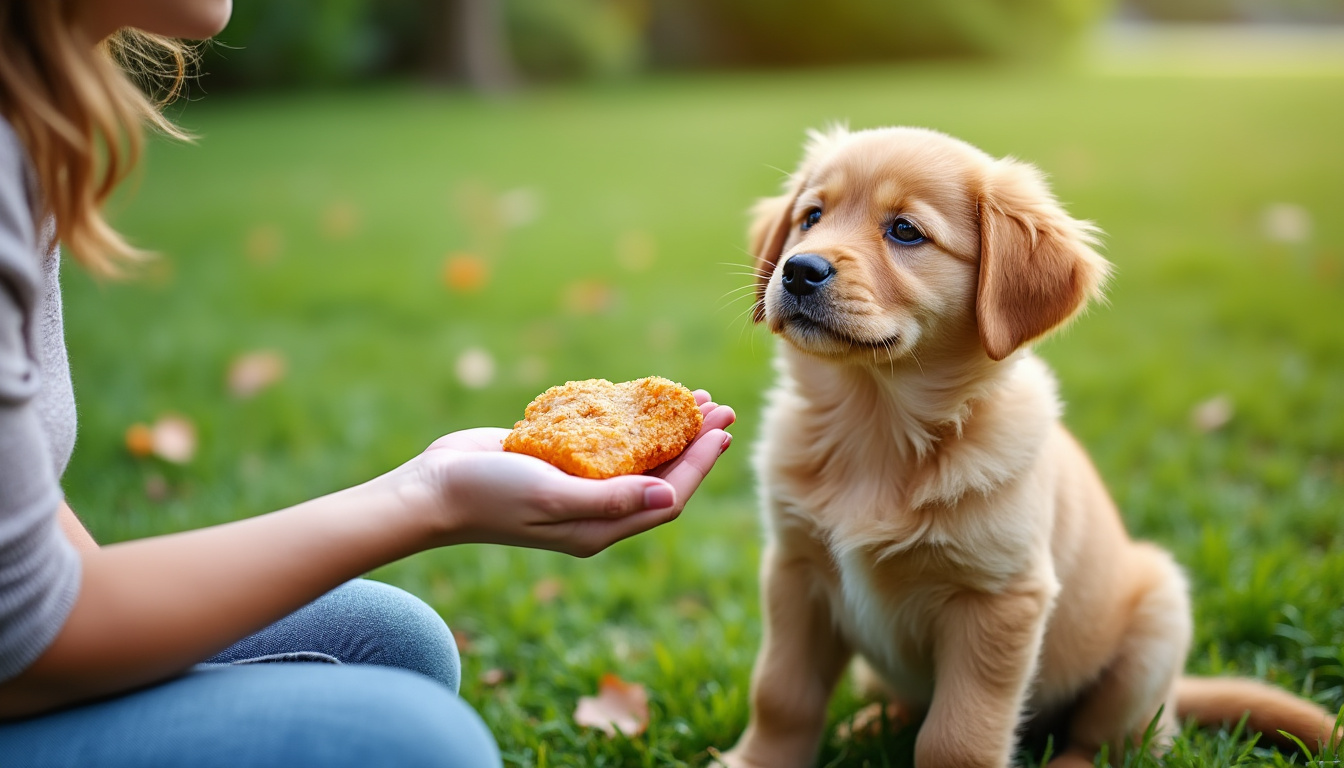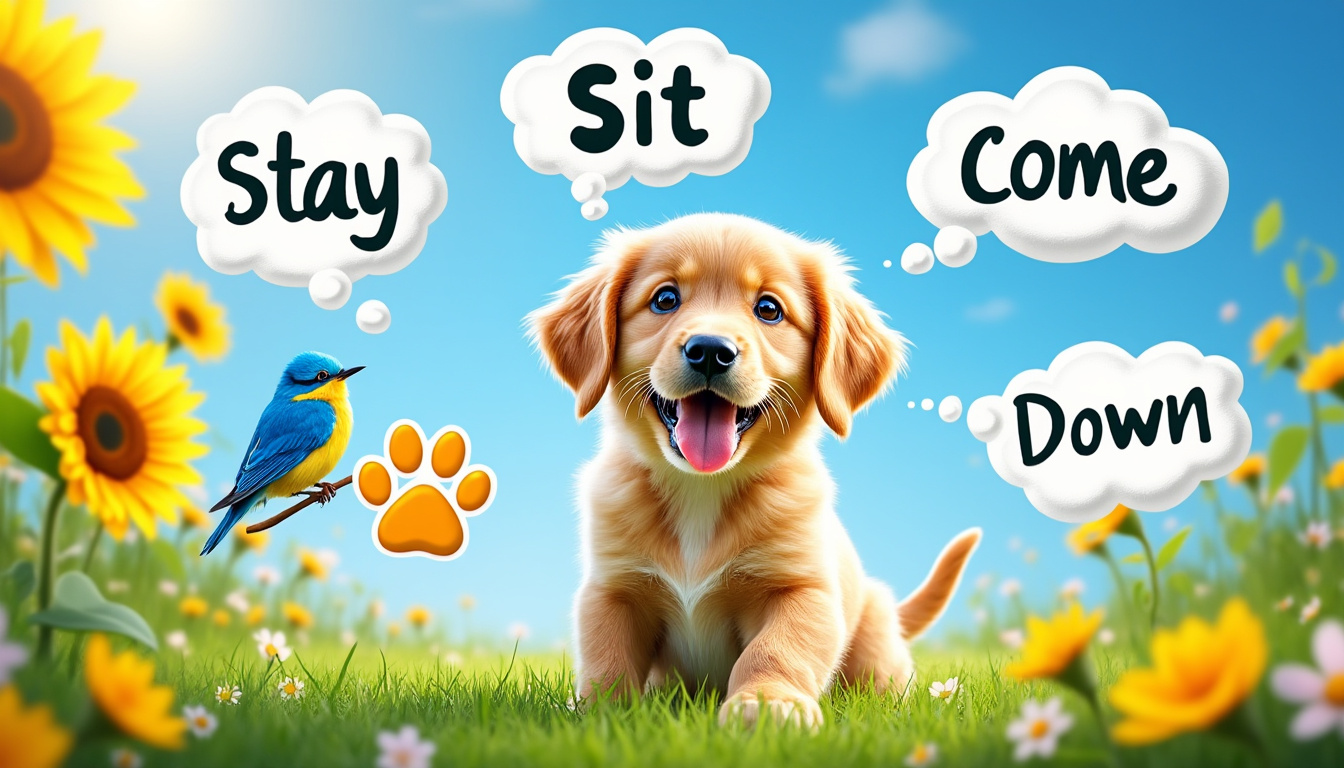What are the basic commands to teach your puppy?
Training a puppy is a crucial step that requires patience and commitment. From the moment they arrive at your home, your four-legged companion needs to learn certain basic commands to live in harmony with humans and other animals. These essential puppy commands are not just tips to prevent undesirable behaviors, but they also contribute to building a relationship of trust. Above all, it involves preparing a positive learning environment based on well-established dog training methods. This article invites you to explore the different commands to teach your puppy, as well as effective techniques to put them into practice.
Every puppy is unique and has its own personality. Dog training methods vary according to the needs and character of the animal, but the fundamental principles that are often overlooked can truly transform your companion’s life. Much more than learning commands, it is about acquiring effective communication between you and your puppy. In the following lines, we will discover the basic commands to teach your dog for good puppy training and enriching moments of companionship.
The five basic commands for a puppy

Teaching puppy commands shouldn’t be a daunting task. A playful approach will make learning more enjoyable for both of you. Here are the five basic commands to discover:
The recall
The recall is undoubtedly one of the most important commands to teach your puppy. It is essential for your pet’s safety when you are outside. Say your dog’s name followed by “come” or “here,” while encouraging them with a treat. Reward them every time they come back to you. Practice this exercise in varied environments to strengthen its effectiveness. You can check this link for more information on effective techniques: The commands to know.
The “sit”
Getting your puppy to sit is a simple but very useful command. This gesture allows your animal to calm down. Hold a treat above their head, then gently pull the treat back to encourage them to sit. In every step of learning, positive reinforcement is paramount. For additional tips, take a look at dog training tips.
The “stay”
This command allows your puppy to remain still in any situation. Place them in a sitting or lying position and start to distance yourself, saying “stay.” Reward them when, even as you move away, they remain in their position. Patience and repetition are keys to success here.
The “no”
It is essential to teach your puppy what they should not do. The command “no” should be used without hesitation when you catch them doing something wrong. Be sure to redirect their attention to an acceptable behavior to reinforce their learning. To delve deeper into the subject, visit this article on basic commands.
Loose leash walking
Teaching your puppy to walk calmly on a leash is essential for pleasant walks. Stop each time they pull and wait for them to come back to you, then praise them. This is crucial to avoid stress and frustration during your outings. To facilitate learning, use suitable and comfortable equipment.
Enriching learning with variations
Once your puppy masters the five basic commands, you can add variations to enrich their learning. These new commands will help create a solid foundation and establish a more harmonious relationship between you and your pet. Here are other basic puppy commands to consider:
The “down”
The “down” command encourages your companion’s calmness. To achieve this, lower a treat towards the ground while using the command “down.” With practice, your dog will quickly learn to assume this position. It’s also a good way to teach patience.
The “wait”
Teaching your puppy to remain still even in the presence of distractions is crucial for their safety. This involves establishing a connection between the command and the desired behavior. This exercise is effective in preventing your dog from wandering off or lunging at something inappropriate.
The “drop it”
The “drop it” command is to prevent your puppy from keeping or chewing on unwanted objects. Use this command when you exchange an object for a treat to create a positive learning experience. It is really recommended for shared play moments.
The “shake”
Although this is not a basic command, the “shake” command enhances interaction and strengthens the bond between you and your dog. Hold a treat and ask them to raise their paw. This often amuses young dogs and is an ideal way to share playful moments with them.
Practical tips for successful learning

Throughout this learning process, it is important to keep a few tips in mind. Here are strategies to make your puppy’s education as enjoyable as possible:
- Patience and perseverance are essential. Each puppy learns at their own pace.
- Rewards should be varied: treats, pets, cheerful voice.
- Create different environments for training sessions to accustom your companion to various situations.
- Sessions should be short but frequent to avoid fatigue during learning.
- Reinforce positive behaviors and correct undesirable behaviors immediately.
- Adapt your training method according to your dog’s character: some methods may work better depending on their personality.
Establishing a positive education routine
Another point not to neglect is establishing a routine. This creates a reassuring framework for your puppy. Setting a learning rhythm with regular schedules will allow them to navigate their days more easily. Additionally, incorporating these sessions into your favorite walks or playtime will facilitate learning as well.
Integrating puppy socialization into these moments is also crucial, as it helps your dog become familiar with other animals and people. Diversify activities while remaining attentive to their comfort and needs. For maximum advice, don’t hesitate to consult our guide on the basic principles of dog training.
Monitoring and adjusting education
As your puppy grows, their learning abilities also evolve. Observe your puppy’s reactions and adjust your training techniques accordingly. Positive communication should remain central to maintain a good learning atmosphere.
Shortly after initiating these principles, consider deepening the knowledge your puppy has acquired. More advanced training techniques can be gradually integrated, and do not overlook joyful and rewarding interaction moments.
Whether you choose brands like Royal Canin or Pedigree for your dog’s food, the important thing is to ensure that your puppy’s daily life is enriching, both physically and mentally. Striking a good balance between training and socialization will allow your four-legged companion to fully thrive.



